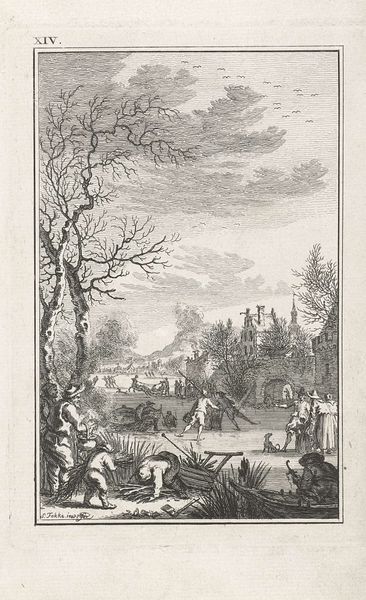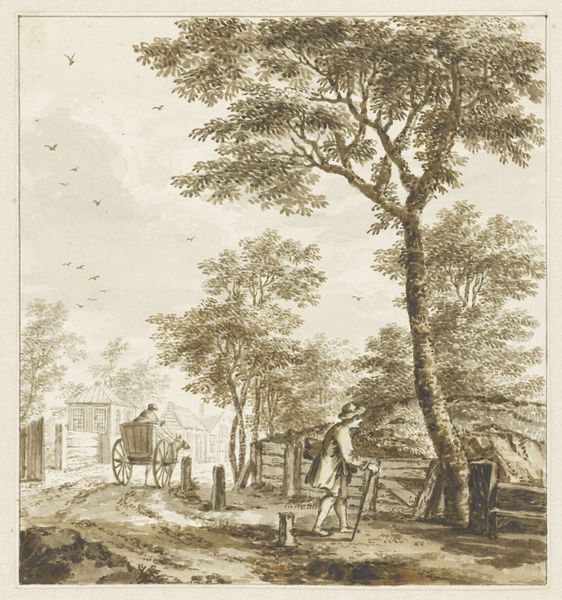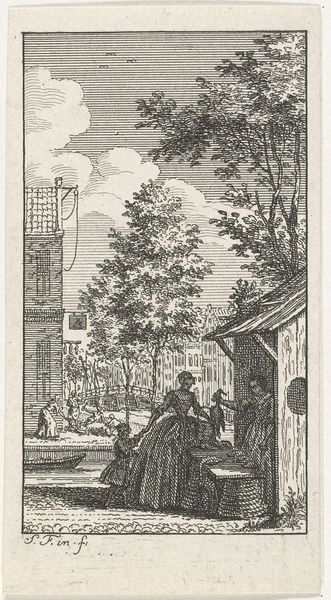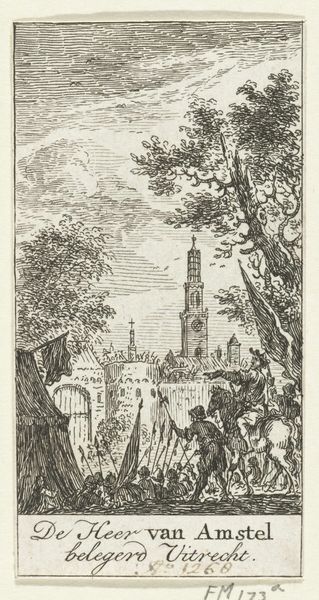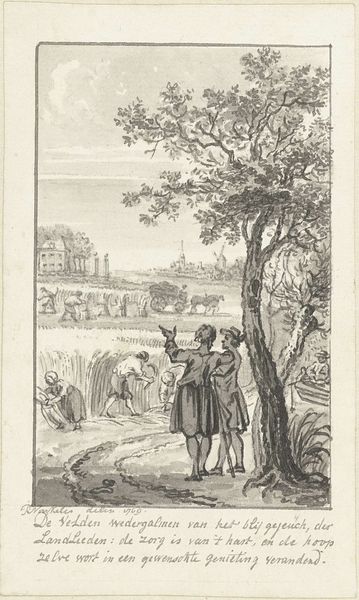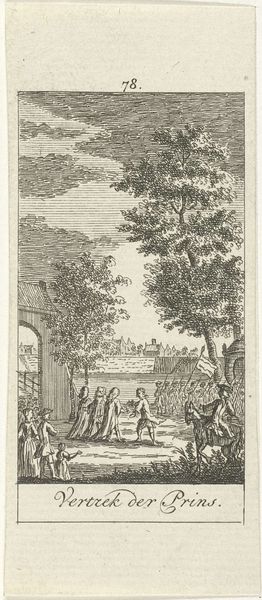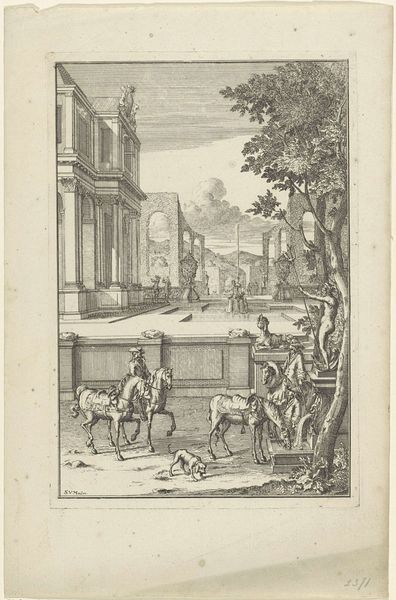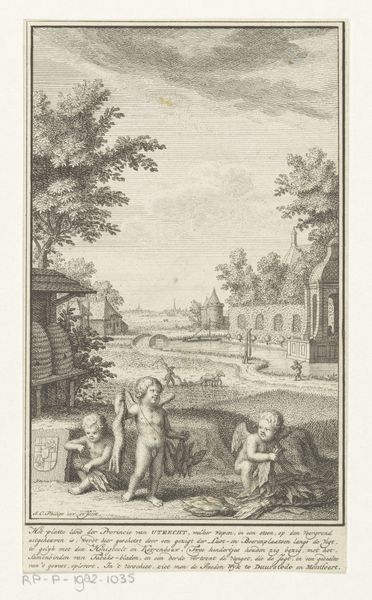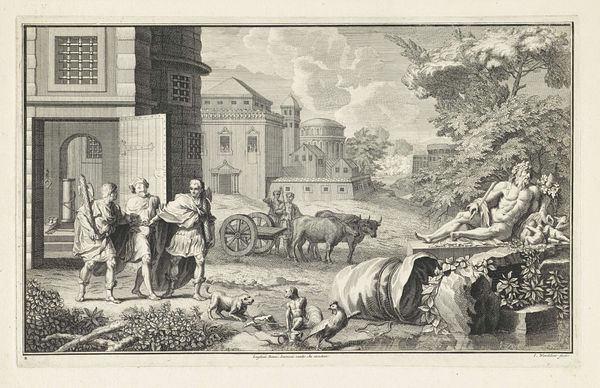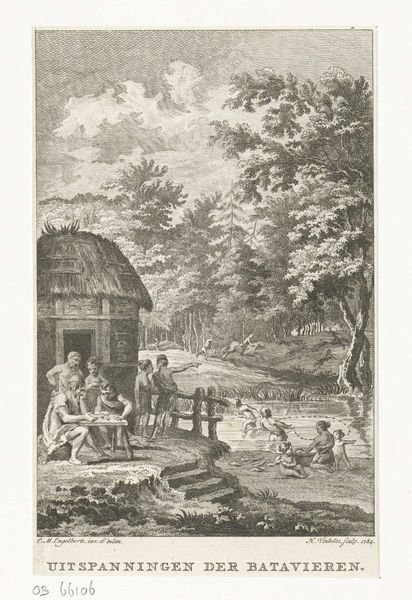
print, engraving
#
baroque
# print
#
pen sketch
#
old engraving style
#
landscape
#
ink line art
#
line
#
genre-painting
#
engraving
Dimensions: height 142 mm, width 98 mm
Copyright: Rijks Museum: Open Domain
Simon Fokke etched this print of a carriage scene in the countryside, and it now resides in the Rijksmuseum. What arrests my attention is the juxtaposition of pastoral labor with aristocratic leisure. The workers harvesting wheat with scythes evoke images of Ceres, the Roman goddess of agriculture. But the scythe is double-edged; it is also a symbol of death, like the Grim Reaper's instrument. From ancient agrarian societies to modern socialist emblems, wheat signifies life's abundance and the dignity of labor. But here, its juxtaposition with the horse-drawn carriage suggests a social hierarchy. The workers are bound to the earth, while the gentry are elevated, observers of the landscape. Consider how this scene echoes in later works, even in cinema, where class distinctions are sharply drawn against backdrops of rural toil. The fields are not just settings but stages where social dramas play out. The recurring presence of wheat and harvesting tools through epochs is a testament to our collective, perhaps subconscious, preoccupation with sustenance, labor, and social order. These symbols continue to engage viewers on a visceral level.
Comments
No comments
Be the first to comment and join the conversation on the ultimate creative platform.

